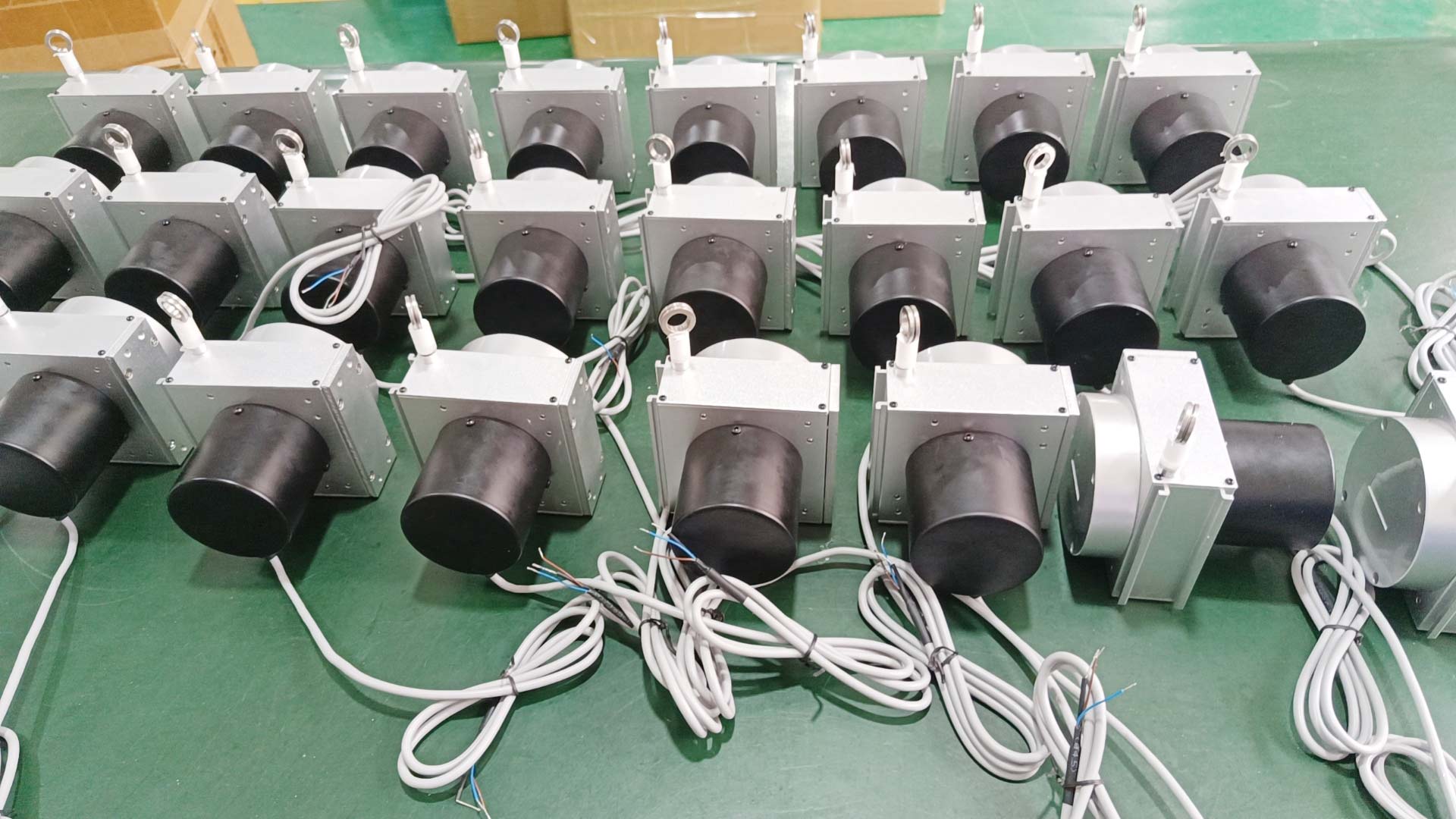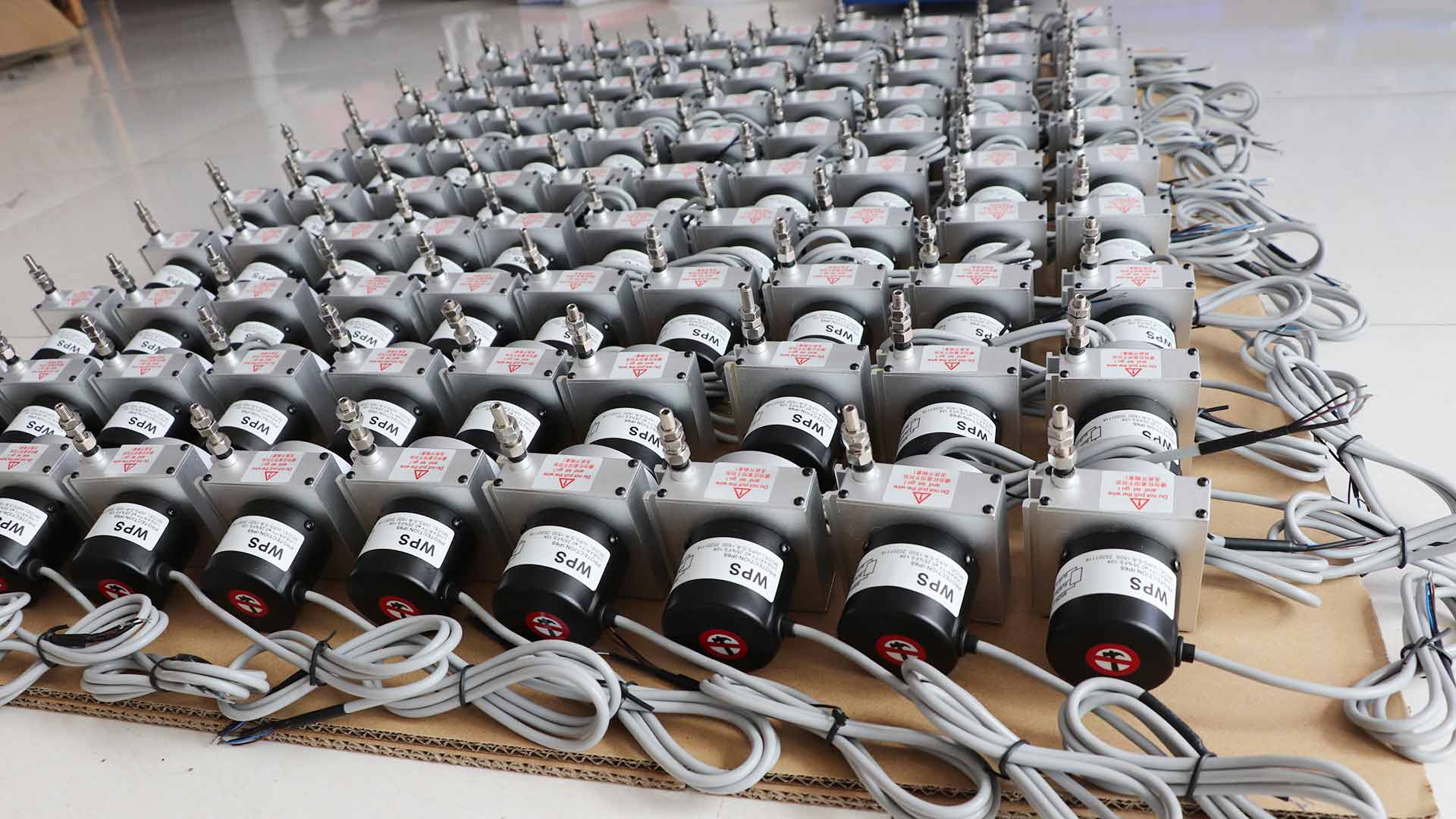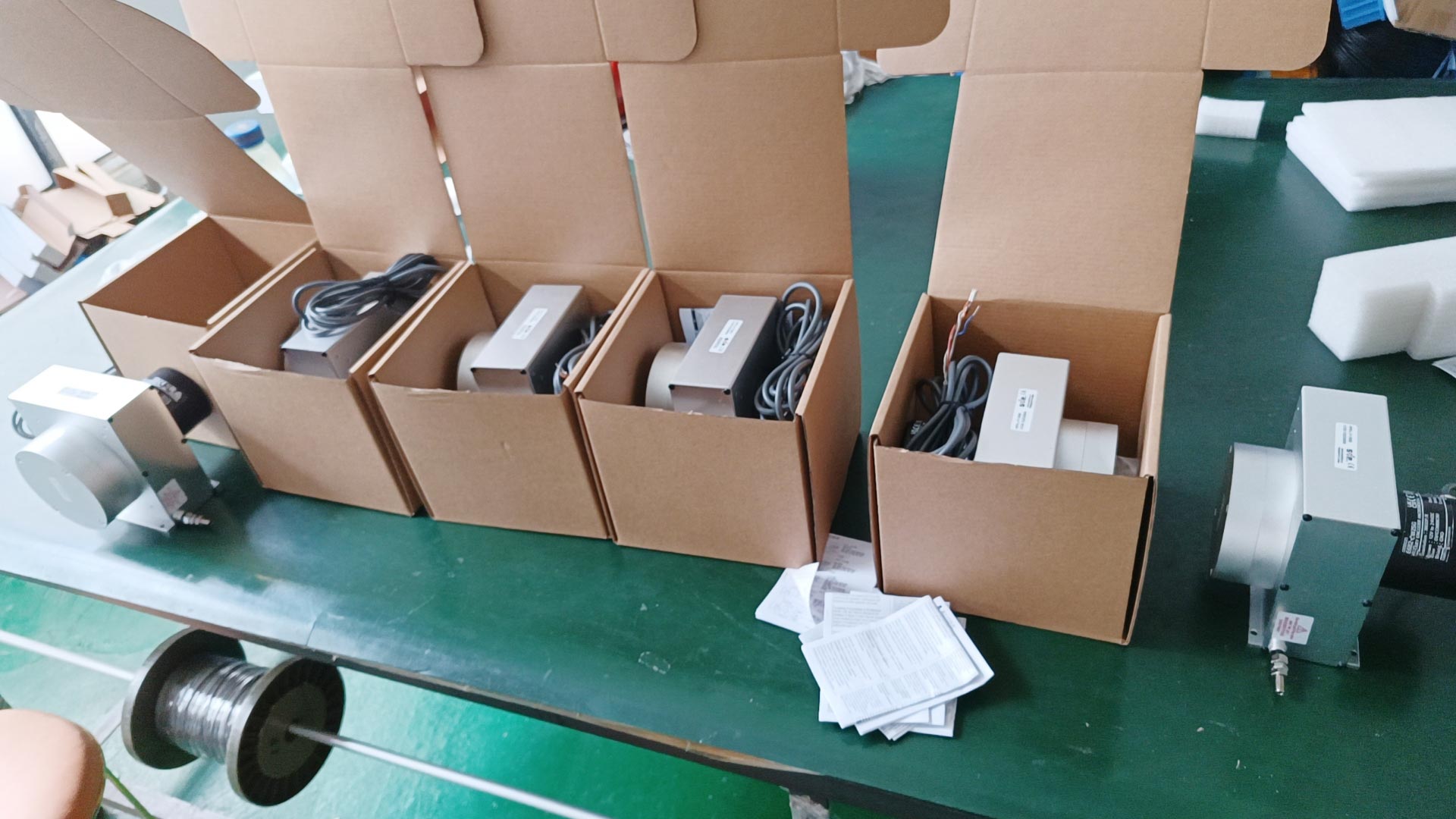What is a draw wire sensor?
What is a draw wire sensor?
The draw-wire displacement sensor is also called a draw-wire sensor, a draw-wire electronic ruler, or a draw-wire encoder. The draw-wire displacement sensor is a sophisticated structural construction of a linear displacement sensor. It fully combines the advantages of an angle sensor and a linear displacement sensor to become a sensor with a small installation size, compact structure, large measuring stroke, and high accuracy. The stroke ranges from hundreds of millimeters to tens of meters. A draw-wire sensor (also called a string pot, cable extension transducer)is a linear position sensor that measures the displacement or velocity of a moving object. It works by converting the linear motion of a flexible measuring wire into a rotary motion, which is then translated into an electrical signal.
Draw wire sensors offer a simple solution to measure linear speed and position. Utilizing a flexible cable, a spring-loaded spool, and a sensor (an optical encoder with incremental, absolute, analog or potentiometric output), draw wire sensors can precisely measure linear position.
Common parameters include measuring stroke, output signal mode, linearity, repeatability, resolution, wire diameter specification, outlet tension, maximum round-trip speed, weight, input resistance value, power, working voltage, working temperature, vibration, protection level, etc.
The signal output mode of the wire-drawn displacement sensor is divided into digital signal output and analog signal output.
Key Components:
Stainless steel wire (often nylon-coated) attached to the moving object
Spring-loaded spool (drum) that reels the wire in and out
Rotary sensor (potentiometer or encoder) that measures the spool’s rotation
Working Principle:
As the object moves, the wire is pulled out or retracted, causing the spool to rotate. This rotation is proportional to the linear displacement. The rotary sensor (encoder or potentiometer) converts this rotation into an electrical signal—either analog (e.g., 0–10 V, 4–20 mA) or digital (e.g., pulse, CANopen, SSI)—which represents the position or speed of the object .
In operation, the draw-wire displacement sensor is installed in a fixed position and the draw-wire is tied to the moving object. The linear motion of the draw-wire is aligned with the axis of motion of the moving object. When motion occurs, the draw-wire stretches and contracts. An internal spring ensures that the tension of the draw-wire remains constant. The threaded hub drives the precision rotary sensor to rotate and outputs an electrical signal proportional to the distance the draw-wire moves. Measuring the output signal can determine the displacement, direction or speed of the moving object.
Advantages:
Compact and cost-effective
Long measuring ranges (from a few centimeters up to Several tens of meters)
High accuracy and repeatability
Robust and suitable for harsh environments (IP65–IP69K rated)
Can measure around corners using pulleys without losing accuracy
Common Applications:
Industrial automation and robotics
Mobile machinery (e.g., forklifts, cranes)
Hydraulic and pneumatic cylinder stroke measurement
Automotive testing and suspension systems
Medical devices (e.g., patient beds)
In summary, a draw-wire sensor is a simple, rugged, and versatile device for accurately measuring linear displacement in a wide range of industrial and mobile applications.The wire-drawn displacement sensor is a high-precision instrument, a metal induction device, which consists of a set of angular displacement sensors and a set of pull boxes. It converts the physical quantity of the measured object into an electrical signal. Therefore, there are several aspects of the wire-drawn displacement encoder that are very important when using it, otherwise it is easy to damage the wire-drawn displacement sensor. So what should we pay attention to when using a rope displacement sensor?
First, the wire displacement sensor will be worn during use. Due to long-term mechanical movement, friction and wear are easy to occur. Over time, the wire displacement sensor will age. These are inevitable damages. Therefore, when using the linear displacement sensor, we must install protective devices according to the use environment. For example, oil, impurities, water, dust, etc. will be mixed in during use. These will damage the wire displacement sensor. We can add waterproof devices, dustproof boxes, etc., so as to reduce the damage of the wire encoder.
Second, the power supply problem. The power supply must be stable and there should be no large fluctuations, otherwise it is easy to damage the wire displacement sensor. The commonly used power supply voltage of the commonly used wire displacement sensor is DC5-24v. There are also other power supply voltages to choose from. It depends on the actual situation of your own use. When supplying power, one thing to note is that the wiring must be correct. Wiring should be done according to the wiring diagram. If it is connected incorrectly, the measured data will be inaccurate at best, and the wire displacement sensor will be burned at worst.
Third, the interference of frequency modulation and electrostatic interference. The signal line of the wire displacement sensor should be separated from other main power lines as much as possible to avoid using the same wire trough.The wire displacement sensor should be installed with great care. Regular maintenance of the wire displacement sensor can also reduce the damage of the wire encoder. If there is a problem, you can use a multimeter to test it, or you can consult the relevant technicians. Do not disassemble it privately, and send it back to the manufacturer for inspection and repair.




